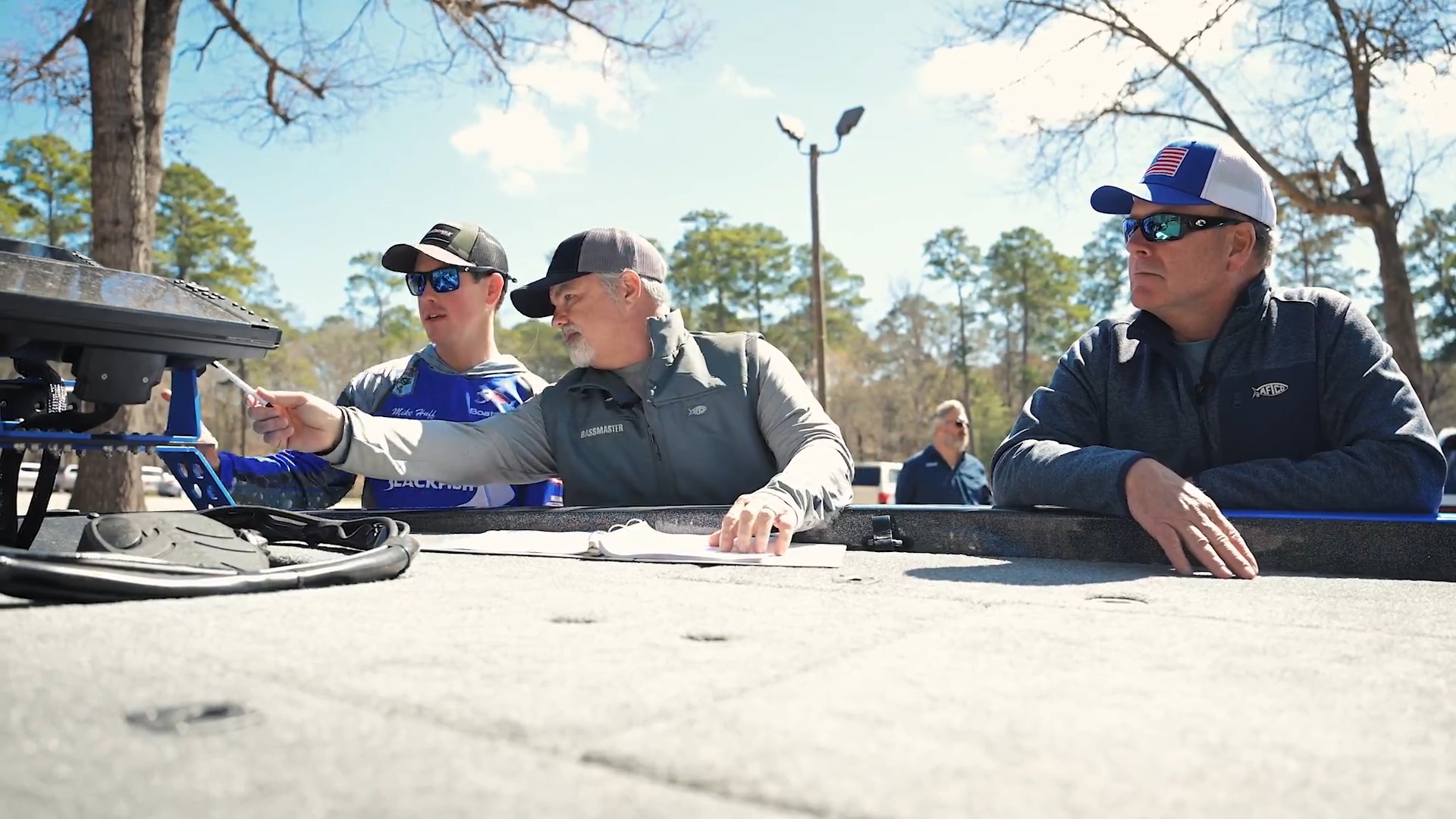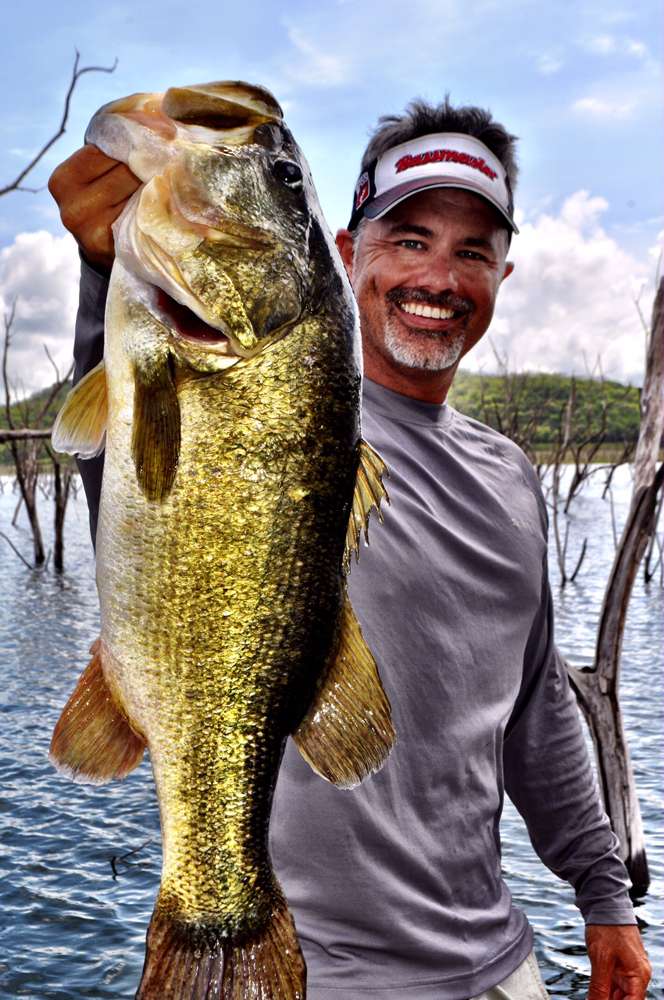
BIRMINGHAM, Ala. — Today, B.A.S.S. made the announcement everyone has been waiting for: Live sonar will NOT be banned for the 2025 season. Instead, the anglers in the Bassmaster Elite Series and contenders for the Bass Pro Shops Bassmaster Classic presented by Jockey Outdoors must now follow new equipment standardization rules that put significant guardrails on what and how much technology can be used. How in the world did the worldwide authority on bass fishing come to that decision? Well, I’m about to tell you. I was on the technology committee that made the recommendation. I know, half of you reading this now think I’m an idiot (if you didn’t already) and likely will not read the justifications. Your loss, in my opinion.
The knee-jerk reaction from the anti-live sonar crowd is going to quickly say it was all about the money. They are wrong. First, B.A.S.S. has a diverse sponsor stable, including electronics manufacturers that would not want the organization to ban or regulate the technology, as well as bait manufacturers who would likely prefer it. To please one sponsor would upset the other. The decision was solely based on what the organization believes will ensure the brightest future for our sport. Period. So, know that the money argument is dumb and was certainly not a consideration.
To understand the decision, you must understand the process that led to it. First, Chase Anderson, CEO of B.A.S.S., gave the technology committee one simple guideline: Develop a recommendation that will, with its implementation, support the heritage of our sport while ensuring its future. That, in case you are wondering, is easier said than done. The first step was to understand the tech that current Elites were running. So, we did physical inspections of every angler’s boat before the first Elite event of the season. In case you are curious, the average MSRP of an Elite’s electronics setup was $19,443. One angler spent over $36K, while another had only $9K. The average inches of screens landed around 63 inches. Some anglers had five live transducers mounted on their boats, from bow to stern. The average number of live transducers was 2.9.
This information was pretty shocking, as the majority of the pros paid for the lion’s share of their electronics (the investment coming directly off their bottom line).
Next, we surveyed the Top 10 finishers of every Elite Series event. We asked these anglers the percentage of time they utilized their live units and how many of the fish they weighed in were caught while using live tech. This survey, alongside watching these anglers compete on Bassmaster LIVE, gave us a solid understanding of how live sonar was impacting the leaderboard. What’s interesting, if you listened to the chatter on social media and a couple of knuckleheads out there who have been using this debate as clickbait for personal benefit, you’d think every fish coming across the Elite Series stage was caught using live sonar. This is not even close to true. For three events, Harris Chain, St. Johns River and Wheeler Lake, less than 15% of the fish caught by the Top 10 anglers were landed using live sonar (that’s less than one fish per day). Murray finished at 42%. Champlain ended about 50-50.
As the season unfolded, the committee surveyed all Elite Series anglers multiple times. It was imperative their voices be heard. Like the rest of the fishing universe, opinions were split down the middle. Both sides made compelling, emotional arguments that had tremendous merit.
Lastly, the committee reached out to manufacturers of fishing gear and state conservation departments. The former explained that many bait categories had been negatively affected by the proliferation of live sonar, while others had thrived. Same with line, rod and reel manufacturers. There was certainly a shift in what anglers bought last year based on the rise in popularity of live technology. As for how live sonar is impacting conservation, which a lot of anglers (including some Elites) are very concerned about, it’s a nothing burger. Two early studies, one in Kansas and one in Arkansas, looked at the catch and harvest rates of crappie by anglers with and without live sonar. They found no significant differences between the groups. In a two-year study, Texas Parks & Wildlife Department determined the technology was not a threat to bass populations. Minnesota and Wisconsin are both looking into the impact of live sonar on panfish and walleye but have zero concern regarding bass populations since the harvest of bass is extremely low.
The final consideration was fan engagement. At the start of the 2024 season, many Elite Series pros were saying the use of live sonar was making the coverage of our sport unwatchable. So, we kept a keen eye on the numbers this season. If the fans hated it, our recommendation would be simple. However, that was not the case. In fact, the opposite was true, which shocked me. The top two viewership events of the year, by a long shot, were Toledo Bend and Lake Fork, which were dominated by live sonar techniques. The production of the coverage, including showing the screens during live sonar catches, actually enhanced the viewership experience.
So, we had the data. Still, building a recommendation was brutally tough. I love the heritage of our sport. I love the time it takes to learn a body of water, the nuances of patterning fish and the details you uncover by spending time on a fishery. I love fishing deep-diving crankbaits, spinnerbaits in brush and Texas-rigged worms. I want to watch pros teach me how to use these tools more effectively. That said, I also love watching a bass come off the lake bottom to eat my jerkbait in real time. I love learning how fish react to a swimbait in real time. I love to find fish in places I never thought they lived. Basically, I love learning about our sport from the best in the business and then employing what I learn on the water when I can get out. I think most anglers are of a similar mindset.
So, our recommendation was to not ban or eliminate tools that might increase catches, teach fans and enhance viewership numbers. Instead, we added a restrictor plate to both the Elite and Classic competitors. Now, only one live transducer is allowed. That’s four fewer than some anglers had, and two less than most. It creates a level playing field. It eliminates the ability for anglers to idle expansive areas with transom-mounted live transducers to scout a lake at a high rate of speed. Now, patterning bass is imperative. You have to understand a fishery and seasonal patterns to know where to start. Many anglers had two live transducers on their trolling motor shaft — one in forward mode, one in perspective mode — to cover more water. Now, the anglers can use one or the other; again, putting guardrails on how the technology can be implemented.
Secondly, we created a list of transducers than can and cannot be used. Some anglers started using saltwater transducers that could shoot out thousands of feet. No more. Now, only those transducers built for freshwater will be permitted. Again, this change is designed for the tech to be used, but not abused.
Beyond the transducer rules, the new regulations prohibit transom mounted trolling motors and limit total inches of screen to 55 inches. Perhaps most importantly, B.A.S.S. will focus on scheduling Elite events on fisheries that will demand a diverse skill set for success.
I’ve been with B.A.S.S. for 25 years. For over two decades, I have been charged with creating content that would help people catch more fish; creating content that would inspire anglers to get on the water for the first time; creating content that would inspire anglers to return to the water’s edge sooner, rather than later. For 25 years, I’ve covered every magic bullet for bass fishing, from lures, to scent, to electronic fish calls, all in the hopes that they would actually work. Success begets effort, and when that effort begets more success, a passion forms. When we have more passionate anglers, we have more buyers of tackle, more fans of pros and more fishing license sales, which enhances conservation efforts. Live sonar legitimately helps people catch more fish. Elite Series pros are the world’s best instructors. By standardizing live sonar technology and adding some restrictive components to its use, I believe we will see the best of both worlds: old school know-how to find fish and new-world ways to catch them.





